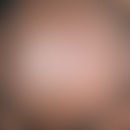Synonym(s)
African mallow; Carcade; hibiscus sabdariffa; Rosella; Roselle; Sabdariff marshmallow; Sudan marshmallow
General informationThis section has been translated automatically.
HMPC: Not processed
ESCOP: Not processed
Commission E: Negative monograph
In traditional medicine: mild laxative, also for mild colds, catarrh, also weeping eczema.
In the cosmetics industry: Hibiscus sabdariffa extract (INCI), Hibiscus militaris extract (INCI)



